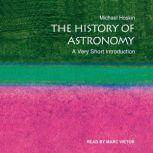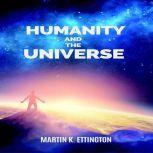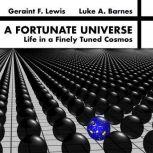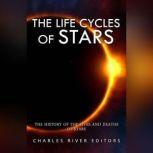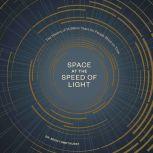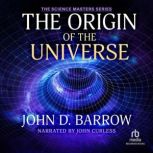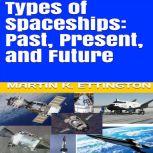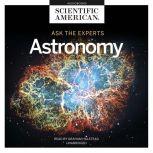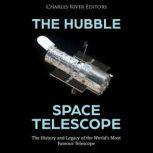
Details
Solar System
Author: Introbooks Team
Narrator: Andrea Giordani
Unabridged: 0 hr 44 min
Format: Digital Audiobook
Publisher: Findaway Voices
Published: 05/14/2016
Genre: Science - Astronomy
Synopsis
As you all might know solar system is a gravitationally bound system. It consists of the sun and all the objects that orbit it. These objects might orbit the sun either directly or indirectly. The eight planets are the largest objects that orbit the sun directly. Rests of them are significantly smaller objects such as dwarf planets, small solar system bodies etc. It is said that solar system was formed about 4.6 billion years ago. The reason behind such gigantic formation was gravitational collapse of an interstellar molecular cloud that has the size even bigger than our current solar system.
Most amount of the system’s mass is packed within the sun itself. A significant amount of remaining mass is contained in Jupiter. Main eight planets are often studied in two groups, inner planets and outer planets. Inner planets are mercury, Venus, Earth and Mars. These planets are often referred as terrestrial planets since their primary elements are rock and metals. Remaining outer planets are also referred as giant planets since they are noticeably massive compared to inner planets. Two largest among them that are Jupiter and Venus are known as gas giants since they are mainly formed with hydrogen and helium. Remaining two outermost planets are known as ice giants (Uranus & Neptune). These ice giants are formed with elements with high melting points compared to hydrogen and helium. These elements are called ices such as water, ammonia and methane. All planets possess their unique orbit that is almost circular. These orbits lie within a flat surface that is known as ecliptic.
Along with these super large planets, there are smaller objects too. Between the orbits of mars and Jupiter, there lies a group of objects such as terrestrial planets or rocks and metals, etc. This area or group is known as asteroid belt. It is noticeable that our solar system does not end with the orbit of Neptune. Kuiper belt and scattered discs are located beyond Neptune’s orbit. They are also considered a part of our solar system. Kuiper belt and scattered discs are group of trans-Neptunian objects. Most of them are formed with ices. Beyond kuiper belt, population of sednoids have been discover in near past. Together all these populations tend to hold more than ten thousand objects. These objects are large enough to hold their own gravity field around them. Such objects are referred as dwarf planets. Asteroid Ceres and trans-Neptunian objects Pluto and Eris are known dwarf planets. It is noticeable that Pluto was considered a planet in the past, however, not any more. In these regions, other minor objects such as comets, centaurs and interplanetary dust freely travel from on region to another. Six planets from main eight planets, four dwarf planets and many minor objects are orbited by natural satellites that we refer as moon or moons. Almost every outer planer is encircled with planetary rings made of dust and other objects. Venus and Jupiter have a clearly visible planetary ring where Uranus and Neptune have thinner one. In this book we will cover all the basic concepts that will help you to understand vast theories later on in dipper studies.
by Michael Hoskin
This is a fascinating introduction to the history of Western astronomy, from prehistoric times to the origins of astrophysics in the mid-nineteenth century. Historical records are first found in Babylon and Egypt, and after two millennia the arithme...
Published: 06/08/2021
by Martin K. Ettington
The Universe is a very big place and has many mysteries. Most people don't realize just how mysterious it is. Scientists are stumped by many of the conundrums which Astronomy reveals. In this book I want to give readers a sense of the grandeur,...
Published: 06/04/2019
by Geraint F. Lewis and Luke A. Barnes
Over the last forty years, scientists have uncovered evidence that if the Universe had been forged with even slightly different properties, life as we know it - and life as we can imagine it - would be impossible. Join us on a journey through how we...
Published: 12/21/2017
by Charles River Editors
When people look up into the night sky, the stars seem fixed and immutable, as unchanging as the darkness of space itself, but the truth is that stars are born, live and die in a never-ending cycle of creation and annihilation. These cycles stretch...
Published: 01/27/2021
by Dr. Becky Smethurst
From the big bang to black holes, this fast-paced tour of time and space for the astro-curious unlocks the science of the stars to reveal fascinating theories, surprising discoveries, and ongoing mysteries in modern astronomy and astrophysics.Before...
Published: 06/02/2020
by John D. Barrow
There is no more profound, enduring or fascinating question in all of science than that of how time, space, and matter began. Now John Barrow, who has been at the cutting edge of research in this area and has written extensively about it, guides us ...
Published: 06/29/2018
by Martin K. Ettington
This book is the seventh volume of “The Living in Space Series”. Each volume focuses on one particular technology of living in space.In this book the focus is on spaceships used to access and travel in space. In my research I was pretty ...
Published: 09/24/2020
by Scientific American
For going on two decades, Scientific American’s “Ask the Experts” column has been answering reader questions on all fields of science. We’ve taken your questions from the basic to the esoteric and reached out to top scientist...
Published: 11/24/2020
by Charles River Editors
On April 24, 1990, the Space Shuttle Discovery lifted off from Kennedy Space Center on the Space Shuttle Program’s 35th mission, but this was no ordinary mission. In its payload bay, Discovery was carrying the Hubble Space Telescope, with the...
Published: 04/16/2021

